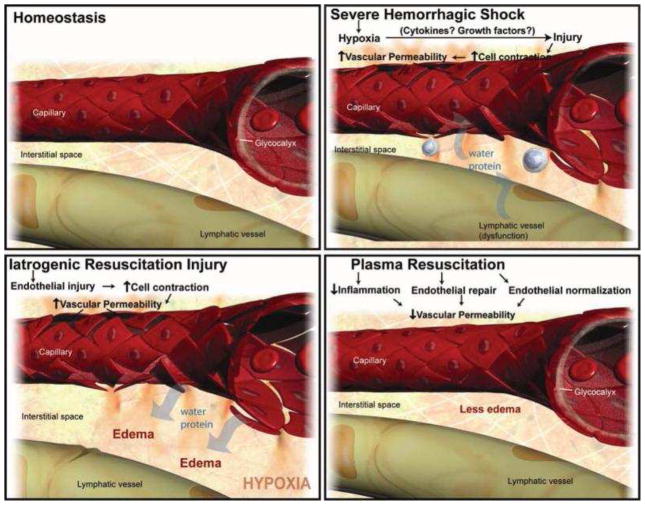Figure 1.
Proposed effect of hemorrhagic shock and crystalloid versus plasma resuscitation on the microvasculature. Panel A. Homeostasis prior to injury. Panel B. Hemorrhagic shock results in shedding of EGL components, resulting in endothelial injury, microvascular permeability, and leakage of fluid into the interstitial space. Panel C. Crystalloids increase hydrostatic pressure in the presence of persistent endothelial injury, resulting in edema. Panel D. Plasma restores intravascular volume while restoring the EGL and repairing endothelial injury, limiting edema. EGL, endothelial glycocalyx layer
From Pati S, Matijevic N, Doursout MF. Protective effects of fresh frozen plasma on vascular endothelial permeability, coagulation, and resuscitation after hemorrhagic shock are time dependent and diminish between days 0 and 5 after thaw. J Trauma 2010;69(Suppl 1):S55–63. Used with permission.

